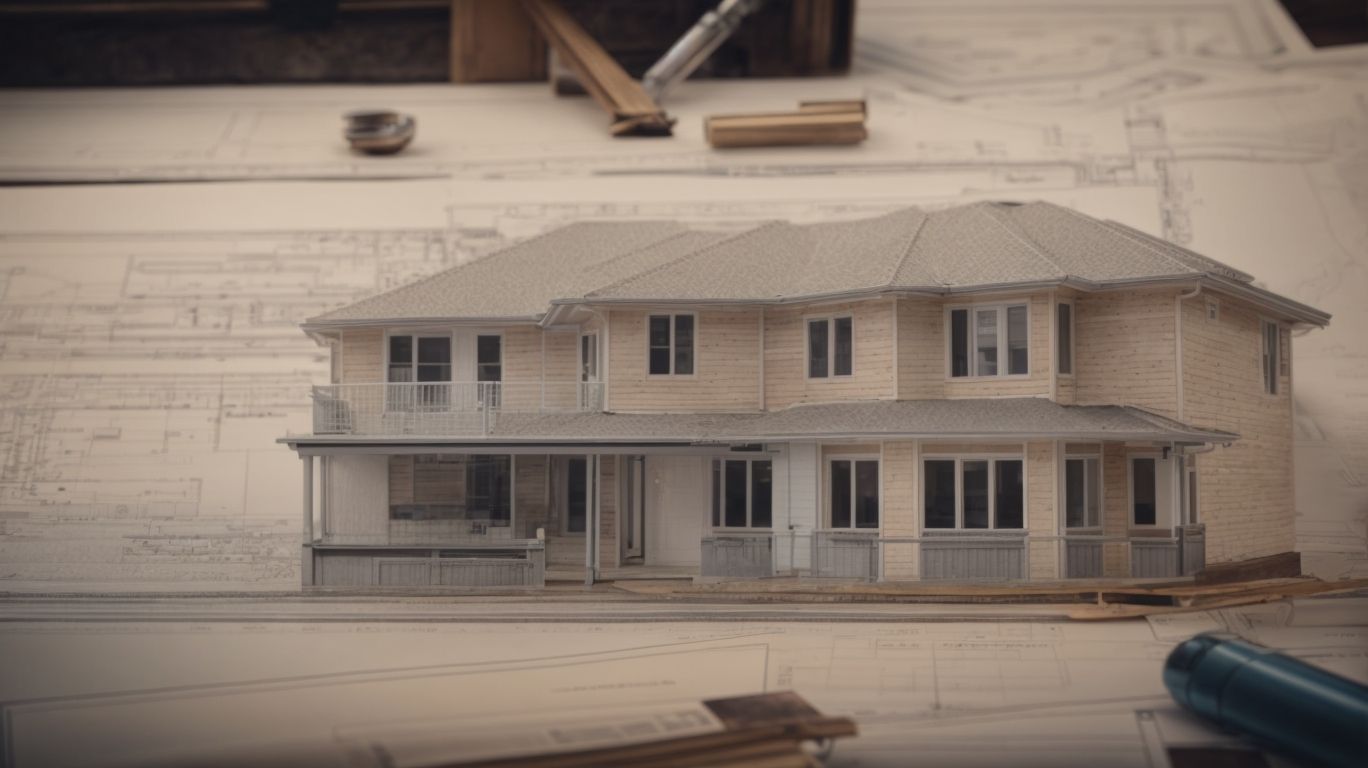
Mastering the Permit Process for Your Bay Area Second Story Addition
Thinking about adding a second story to your home in the Bay Area? Before you start, it’s crucial to understand the permit process and requirements you’ll need to navigate.
From zoning regulations to building codes and energy efficiency standards, there are several key factors to consider.
In this article, we’ll break down the steps of the permit process, common challenges you may face, and tips on how to successfully navigate the process.
Let’s dive in and master the permit process for your Bay Area second story addition.
Understanding the Bay Area Permit Process for Second Story Additions
Mastering the permit process for second story additions in the Bay Area involves navigating through a complex set of regulations, building codes, and local authorities.
Understanding the intricacies of the permit process is crucial for homeowners and contractors alike. The Bay Area’s strict zoning laws and seismic requirements add layers of complexity to any construction project. From obtaining approvals for structural changes to ensuring compliance with environmental regulations, each step requires attention to detail and thorough documentation. Knowing the specific requirements for second story additions, such as setback restrictions and height limitations, can save time and prevent costly delays. Navigating this process successfully requires a deep understanding of the unique challenges posed by the Bay Area’s regulatory landscape.
What Are the Requirements for a Second Story Addition in the Bay Area?
The requirements for a second story addition in the Bay Area encompass adherence to strict zoning laws and building codes to ensure compliance with local regulations.
Zoning laws play a crucial role in determining the allowable height, setbacks from property lines, and overall footprint of the proposed second story addition. These laws are in place to maintain the aesthetic appeal and integrity of the neighborhood while also considering factors such as sunlight access and privacy for neighboring properties.
Similarly, building codes outline specific requirements for structural integrity, fire safety, and energy efficiency in the construction of the second story. Compliance with these codes not only ensures the safety of the occupants but also contributes to the overall sustainability of the building.
Local regulations further guide the approval process, outlining steps for permits, inspections, and other administrative procedures that must be followed diligently.
Zoning Regulations
Navigating the zoning regulations in the Bay Area is essential for planning and executing a second story addition that complies with the area’s specific requirements.
When considering a construction project like a second story addition, understanding the intricate web of zoning laws and guidelines is crucial. Local jurisdictions in the Bay Area have stringent regulations in place to ensure that new developments blend harmoniously with the existing landscape. Compliance with these rules not only guarantees the safety and structural integrity of the project but also plays a significant role in preserving the aesthetic appeal of the neighborhood. By adhering to the zoning regulations, property owners contribute to the overall sustainability and stability of the community.
Building Codes
Adhering to building codes prescribed by local authorities is crucial when undertaking a second story addition to ensure structural integrity and safety compliance.
These codes play a key role in safeguarding the inhabitants of buildings in the Bay Area, as they set strict standards that must be met to prevent potential hazards. Whether it’s ensuring the proper placement of support beams to handle increased loads or implementing fire safety measures, following these regulations is paramount. Building codes also contribute to the longevity of structures by ensuring that materials and construction methods are of high quality and withstand environmental factors unique to the region. Non-compliance can not only lead to costly repairs but also pose serious safety risks to occupants.
Structural Requirements
Meeting the structural requirements for a second story addition necessitates collaboration with a qualified structural engineer to ensure the project’s integrity and compliance with building specifications.
This crucial partnership involves the careful examination of existing foundation conditions, load-bearing capabilities, and design considerations for the newly added space. A structural engineer plays a pivotal role in assessing the structural soundness of the current building and devising appropriate solutions to support the additional load and safeguard against potential risks. Utilizing advanced construction techniques and materials recommended by the engineer is essential to guarantee the stability and longevity of the new structure.
By adhering strictly to building codes and regulations, the second story addition can seamlessly integrate with the existing property, enhancing both its functionality and value.
Energy Efficiency Standards
Incorporating energy efficiency standards into a second story addition project in the Bay Area promotes sustainability and enhances the overall environmental impact of the construction.
These standards are crucial for reducing energy consumption and minimizing the carbon footprint of the building. By utilizing energy-efficient HVAC systems in the design and construction of the second story addition, homeowners can significantly lower their energy bills while also contributing to a healthier planet. Sustainable practices, such as using renewable materials and optimizing natural lighting, further support the eco-friendly nature of the project. Implementing these energy-efficient strategies not only benefits the environment but also enhances the comfort and livability of the newly added space.
What Are the Steps of the Permit Process for a Second Story Addition?
Navigating the permit process for a second story addition involves several key steps, from preparing and submitting architectural plans to obtaining necessary permits for construction.
- Once the architectural plans are prepared, they need to be submitted to the local building department for review. The submission typically includes floor plans, elevations, structural drawings, and any other relevant details required by the local zoning regulations.
- After the plans are approved, the next step is to complete the permit application forms. These forms usually require detailed information about the construction project, such as the scope of work, materials to be used, and estimated timeline. With the approved plans and completed permit applications, the homeowner can then proceed with project management, which involves hiring contractors, scheduling inspections, and ensuring compliance with building codes throughout the construction process.
Preparing and Submitting Plans
The initial phase of the permit process entails preparing detailed architectural plans that outline the project scope, cost estimation, and design elements of the second story addition.
These architectural plans serve as a blueprint for the entire construction project, providing a clear vision of the desired outcome. To ensure compliance with zoning regulations and building codes, the plans must accurately depict the structural changes, materials to be used, and specific measurements for the new addition.
Considerations such as the architectural style, roofline integration, and interior layout are crucial aspects that need to be reflected in the plans. Once the plans are finalized, they are submitted to the local building department for review and approval before any construction work can commence.
Review and Approval Process
The review and approval process for a second story addition involves adherence to project deadlines, presentation to permits review board, and culminates in a final inspection for occupancy permit.
During the initial phase of the process, ensuring that all necessary documentation and permits are in order is crucial. Following this, the project timeline must be strictly adhered to, with milestones and deadlines being met to avoid delays.
Once the project is ready for review, a presentation to the permits review board is scheduled, where the proposed second story addition is scrutinized for compliance with building codes and regulations. Upon successful approval by the board, the final step involves a thorough inspection to ensure that the addition meets all safety and structural requirements before the occupancy permit is issued.
Obtaining Permits
Obtaining the required permits for a second story addition involves fulfilling fee payments, ensuring compliance with regulations, and signifies a crucial step towards project completion.
These permits are not just bureaucratic hoops to jump through; they are essential for ensuring the safety and structural integrity of the project. Before the construction of a second story addition can commence, obtaining the necessary permits is vital to guarantee that the architectural plans adhere to local building codes. In addition to this, the permit application process typically involves submitting detailed drawings, calculations, and other documentation to the relevant authorities for review.
What Are the Common Challenges in the Permit Process for Second Story Additions?
Navigating the permit process for second story additions can present challenges such as project delays, potential code violations, and the need for ensuring homeowner satisfaction.
Delays in obtaining permits can significantly impact project timelines, leading to frustrating setbacks for homeowners eager to see their vision come to life.
Code compliance issues further compound these challenges, as non-compliance can result in costly revisions, redesigns, and even fines.
Balancing the technical requirements of building regulations with the aesthetic and functional preferences of the homeowner requires meticulous planning and attention to detail.
Ultimately, ensuring homeowner satisfaction throughout the permit process demands clear communication, proactive problem-solving, and a commitment to delivering a successful, hassle-free experience.
Meeting Zoning Requirements
Meeting zoning requirements in second story additions involves adhering to specific neighborhood guidelines, setback requirements, and achieving project milestones within set parameters.
Neighborhood guidelines play a crucial role in determining the overall aesthetic and structural integrity of second-story additions. These guidelines may include restrictions on building height, architectural style, and even color schemes to ensure seamless integration with the existing neighborhood.
Setback compliance is another key challenge, as it requires careful planning to maintain the proper distance from property lines and neighboring structures. Meeting project milestones is essential for keeping the construction process on track and within budget, requiring effective communication and coordination among all stakeholders involved.
Addressing Neighborhood Concerns
Addressing neighborhood concerns during the permit process requires effective communication with neighbors and community members to ensure project alignment and mitigate potential conflicts.
Engaging in open dialogue with residents can help in understanding their perspectives and expectations, fostering a sense of trust and collaboration. By involving the community early on, decision-making becomes more inclusive, allowing for feedback and input that enrich the final outcome.
Implementing conflict resolution strategies, such as hosting neighborhood meetings or appointing a liaison to address issues, can proactively prevent misunderstandings or disputes. Transparency and responsiveness to neighbor concerns not only build goodwill but also contribute to a harmonious environment for all parties involved.
Dealing with Delays and Rejections
Managing delays and rejections in the permit process for second story additions necessitates proactive measures to address issues, secure approvals, and expedite project completion.
One effective strategy is to closely monitor the approval processes by maintaining regular communication with the permitting office and promptly addressing any feedback or concerns raised.
It is also crucial to ensure that all necessary documentation is submitted accurately and in a timely manner to avoid unnecessary delays.
Having contingency plans in place for potential rejections can help minimize setbacks and keep the project on track.
By staying organized, proactive, and responsive throughout the permit process, you can increase the likelihood of a successful and timely project completion.
How Can You Navigate the Permit Process Successfully?
Successfully navigating the permit process for second story additions involves hiring an experienced contractor, coordinating with the construction crew, and efficient project management.
Ensuring clear communication channels between the contractor, crew members, and project manager is crucial for a smooth process. By establishing regular meetings and progress updates, potential roadblocks can be identified and addressed promptly, keeping the project on track.
Experienced contractors bring valuable insight and knowledge to the table, helping anticipate potential issues and provide effective solutions. Coordinating tasks efficiently among the construction crew ensures that timelines are met and quality standards are upheld.
Effective project management practices, such as detailed scheduling and budget tracking, play a vital role in keeping the project organized and within scope.
Hire an Experienced Contractor
Engaging an experienced contractor for second story additions ensures quality control, proper material selection, and adherence to construction standards for a successful project outcome.
These professionals bring a wealth of knowledge and expertise to the table, guiding the project with precision and efficiency. With years of experience, they understand the intricacies of working on elevated structures and can navigate potential challenges with ease. Their in-depth understanding of building codes and regulations ensures that the addition is not only visually appealing but also structurally sound. By utilizing their expertise, you can rest assured that the project is being handled with the highest level of craftsmanship and attention to detail.
Communicate with Your Local Building Department
Establishing clear communication channels with the local building department is crucial for effective coordination, timely paperwork submission, and streamlined permit processing for second story additions.
Maintaining open lines of communication with the building department can help to ensure that all necessary documentation is submitted correctly and promptly. By keeping the department informed of any updates or changes throughout the process, potential delays can be minimized, and the overall timeline for obtaining permits can be expedited.
Clear communication allows for any questions or concerns to be addressed promptly, helping to prevent misunderstandings or errors that could otherwise hinder the progress of the project. Effective communication is key to a smooth permit process and successful completion of second story additions.
Be Prepared for Unexpected Costs and Delays
Anticipating unexpected costs and delays in second story additions requires diligent budgeting, realistic timeline planning, and proactive management of project deadlines to ensure successful completion.
By incorporating a buffer in your budget for unforeseen expenses and building in extra time in your timeline, you can better handle any unexpected twists that may arise during the construction process.
It’s vital to work closely with contractors and suppliers to stay updated on potential delays and adjust your schedule accordingly. Regular communication and monitoring progress against milestones will help you identify any issues early on and take corrective actions to keep the project on track.
Being proactive and adaptable in your approach will ultimately lead to a smoother construction journey.”




No Comments